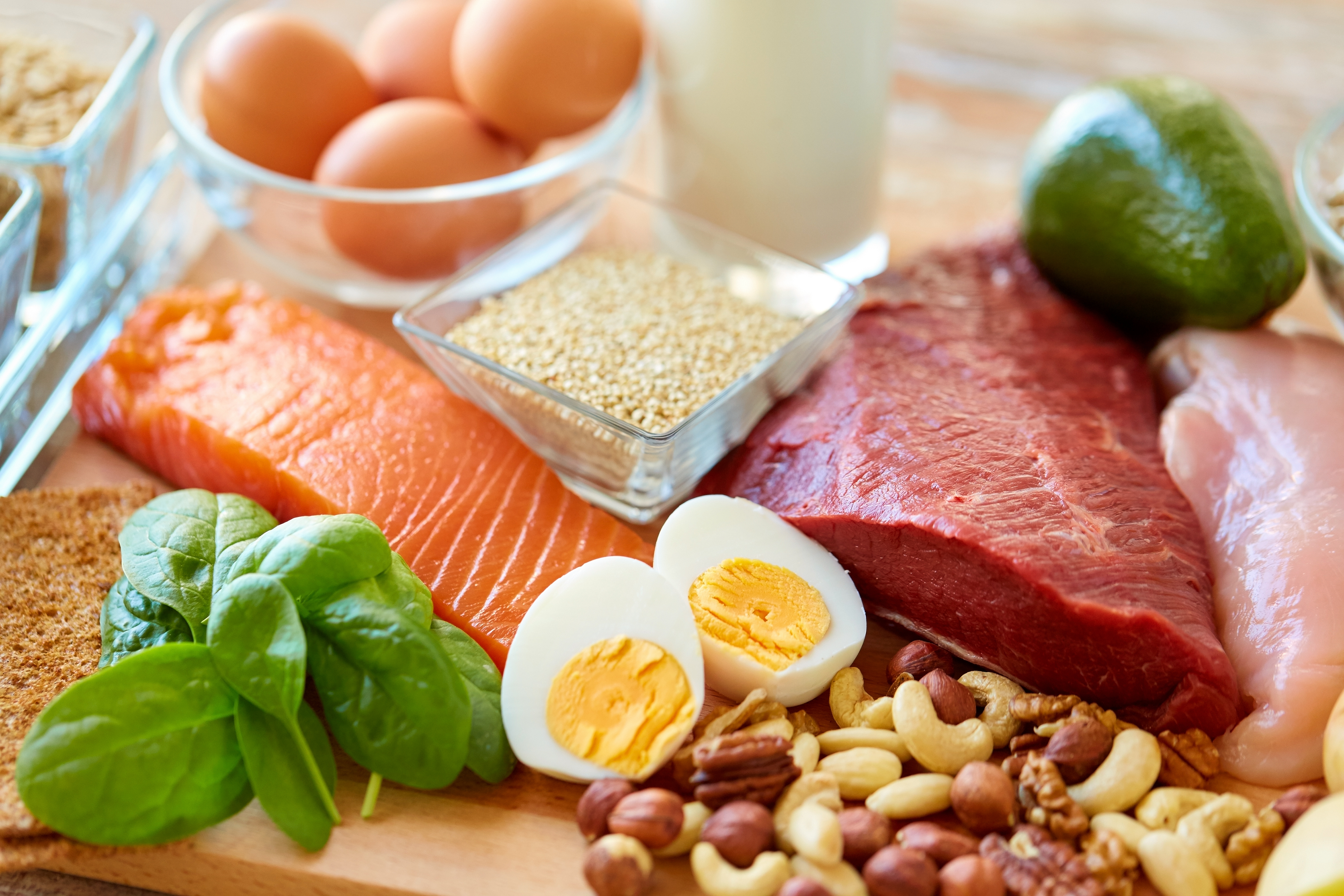11 Personalized Nutrition Tips Based on Your Body's Unique Needs (Beyond Fad Diets)
Forget detox teas and elimination cults. The future of health is not about subscribing to the latest food craze—it’s about subscribing to yourself. Personalized nutrition is the science of understanding your body’s real needs: what energizes you, what drains you, and what keeps you functioning at your best. It's an approach that ditches restrictive one-size-fits-all plans in favor of data, habit patterns, and biological truth. This article doesn’t promise a miracle diet. It offers 11 clear, research-backed strategies to decode what your body wants—not what the internet thinks it should. Because the best diet is the one that actually fits you. So, let's begin!
1. Know Your Baseline: Start with a Full-Panel Blood Test

Before you cut gluten, carbs, or entire food groups, get the full picture. A comprehensive blood test gives you hard data: vitamin deficiencies, inflammation markers, cholesterol ratios, thyroid function, fasting insulin levels, and more. Many people misdiagnose their fatigue or cravings when the root cause is something like low B12 or ferritin. Knowing your numbers means you’re not guessing—it’s the nutritional equivalent of turning the lights on. Start with a test recommended by a certified practitioner, and revisit it yearly. This forms the foundation of all personalized nutrition: clarity over assumption.
2. Track Your Energy, Not Just Calories

Calorie counting doesn’t tell you if a meal worked for you. What matters more is how you feel—physically and mentally—after eating. Keep a simple energy and focus tracker for a week. Log what you eat, when you eat, and how you feel two hours later: sleepy? Sharp? Craving more? This helps identify what fuels your body vs. what fogs it. You’ll begin to see that portion size is only one part of the equation—timing, nutrient density, and food combinations play a massive role. Personalized nutrition isn’t just about quantity; it’s about how food functions in your body.
3. Understand Your Carb Tolerance

Carbohydrates aren’t the enemy—but they do affect people differently. Some can eat rice or pasta daily and stay energized. Others crash or bloat. If you're unsure, test your post-meal blood sugar using a continuous glucose monitor (CGM) or track symptoms like fatigue, hunger, and mood. You’ll notice certain carb types or times of day work better than others. Complex carbs (like lentils, oats, or sweet potatoes) often offer steadier energy than refined grains. Pairing carbs with fiber, fat, or protein also helps slow glucose spikes. Understanding your personal carb threshold leads to more stable energy—and fewer cravings.
4. Eat for Your Microbiome

Your gut microbiome plays a central role in immunity, mood, weight, and nutrient absorption. But no two guts are the same. Some people thrive on fermented foods like kimchi or sauerkraut, while others get bloated. Prebiotics like garlic, onions, or bananas might fuel good bacteria—or irritate those with IBS. A personalized nutrition plan considers your gut's current ecosystem. A stool test can help identify imbalances, but even a food journal tracking digestive symptoms can offer clues. The goal isn’t just diversity—it’s alignment. Feed the microbes that support your system, not the ones that sabotage it.
5. Prioritize Protein According to Your Body Type and Activity

Protein needs aren’t universal. Sedentary individuals need less than athletes or older adults trying to preserve muscle mass. Men and women also differ in protein metabolism. Personalized nutrition encourages you to calculate needs based on your body weight, muscle composition, and goals. Aim for at least 1.2–1.6 grams of protein per kilogram of body weight if you’re moderately active. Distribute intake evenly across meals to maximize synthesis. Track how you feel: Are you full longer? Recovering faster after workouts? That’s your body responding. Protein isn’t just about muscle—it supports hormones, immunity, and brain function too.
6. Hydration = Custom Electrolyte Balance

Hydration isn’t just about drinking more water—it’s about maintaining the right balance of electrolytes: sodium, potassium, magnesium, and calcium. Sweat, stress, alcohol, low-carb diets, and medications can all deplete these minerals, even if you're technically “hydrated.” If you’re fatigued, cramping, or dizzy despite high water intake, you may be overhydrated and under-mineralized. Try adding a pinch of sea salt to water or using electrolyte supplements. Coconut water, spinach, avocados, and bananas also help. Personalized hydration focuses on your unique output and environment—how much you sweat, how active you are, and where you live.
7. Honor Your Sleep Cycle with Nutrition

Your body metabolizes food differently at different times of day. Eating heavy meals late at night can disrupt sleep, spike cortisol, and impair glucose tolerance. Personalized nutrition pays attention to your sleep–food relationship. If you struggle with insomnia, acid reflux, or night-time cravings, review your dinner habits. Eat your biggest meals earlier and include foods rich in tryptophan, magnesium, or melatonin precursors: think turkey, nuts, and leafy greens. Try time-restricted eating (e.g., 8 a.m. to 6 p.m.) for a week and note any improvements. Aligning food intake with your circadian rhythm can dramatically improve both digestion and rest.
8. Ditch Default Caffeine Schedules

Caffeine sensitivity varies widely—and it’s often genetic. Some people are fast metabolizers and feel fine with 3 cups a day. Others get anxiety, poor sleep, or acid reflux from a single espresso. Personalized nutrition means questioning the 9 a.m. coffee ritual. If caffeine makes you jittery or disrupts your sleep—even if consumed early—it’s time to cut back or switch to green tea. You can also support alertness naturally by hydrating well in the morning, getting ten minutes of sunlight, and avoiding sugary breakfasts. The best energy boost? One that doesn’t leave you crashing.
9. Supplement Smarter, Not More

Multivitamins aren’t a magic fix—and can be wasteful if not targeted. Personalized nutrition uses lab results to guide supplementation. For example, if you're vegan, you’ll need B12 and possibly iron or zinc. If you work indoors, vitamin D might be non-negotiable. Sleep-deprived? Magnesium glycinate could help. Chronically stressed? Consider adaptogens like 'ashwagandha'—if tolerated. Start with one or two supplements, track their effects, and avoid mega-dosing unless supervised. More isn’t better—specific is. Your supplement shelf should reflect your body, not the wellness aisle.
10. Design a Morning Ritual Based on Your Body’s Weak Spot

Start your day with intention, not imitation. Instead of forcing a cold green smoothie because it’s trendy, ask: What does my body struggle with in the morning? If digestion is sluggish, opt for warm lemon water or ginger tea. If focus is scattered, try a savory high-protein breakfast—like eggs and avocado. If you’re groggy or anxious, try breathwork, a short walk, or something creative before checking your phone. Personalized nutrition extends to how you eat, not just what. Ritual is biology made visible. Build your mornings around your recurring need—and see how much changes.
11. Stop Glorifying Elimination—Start Personalizing Inclusion

Most diet culture is obsessed with cutting things out: no dairy, no carbs, no joy. Personalized nutrition flips the frame. Instead of asking “What should I remove?”, ask “What am I missing?” Often, it’s fiber, omega-3s, micronutrients, or even satisfaction. Add roasted vegetables to lunch. Add herbs to dinner. Add fat to balance a carb-heavy meal. Build a plate that supports your system instead of punishing it. Personalized nutrition is about designing a diet that reflects your context—medical history, cultural preferences, even emotional triggers. Inclusion is more sustainable than restriction. And joy is a nutrient too.
Personalized nutrition isn’t about control—it’s about clarity. The clarity to understand what your body is asking for and how to respond, without fear, rigidity, or shame. In a world overflowing with generic advice, what’s most radical is to listen to yourself. These 11 strategies are just entry points. The real shift happens when you begin noticing patterns, tuning in, and making decisions not from trend-based urgency, but from quiet recognition. Food becomes less of a performance—and more of a partnership. That’s not just healthier. That’s freedom.
